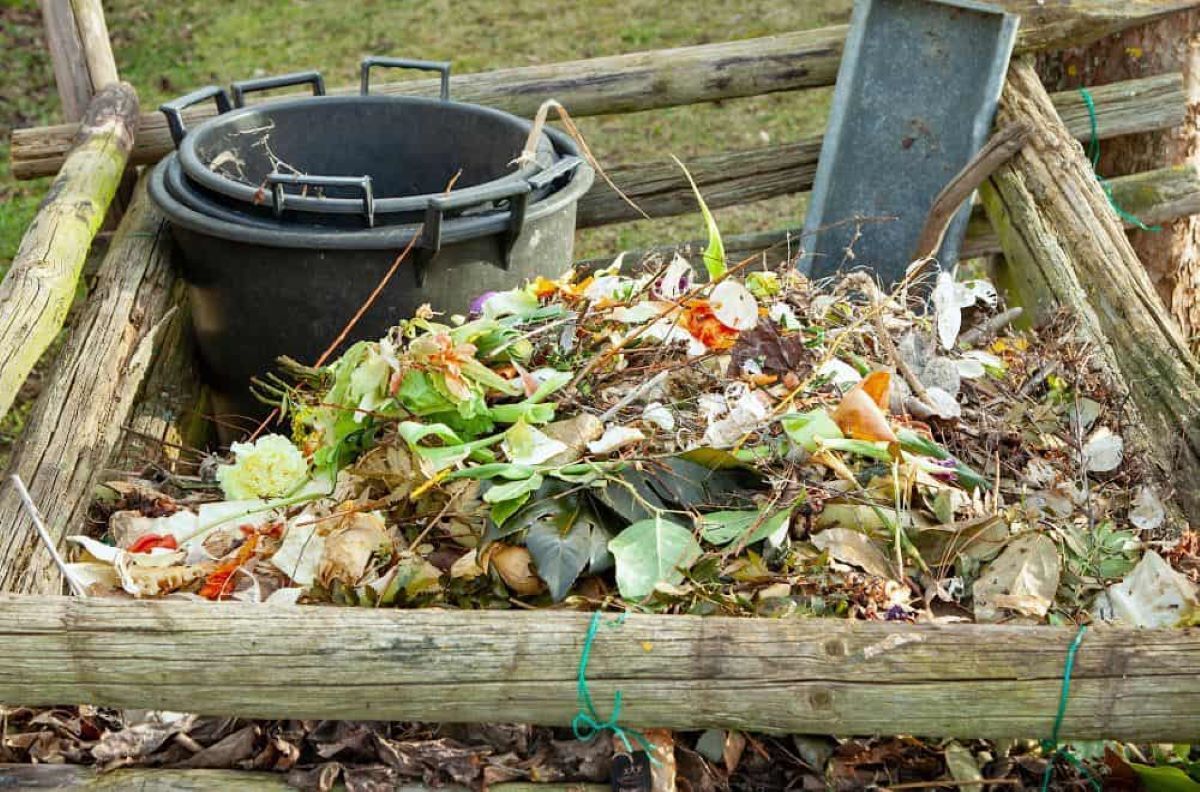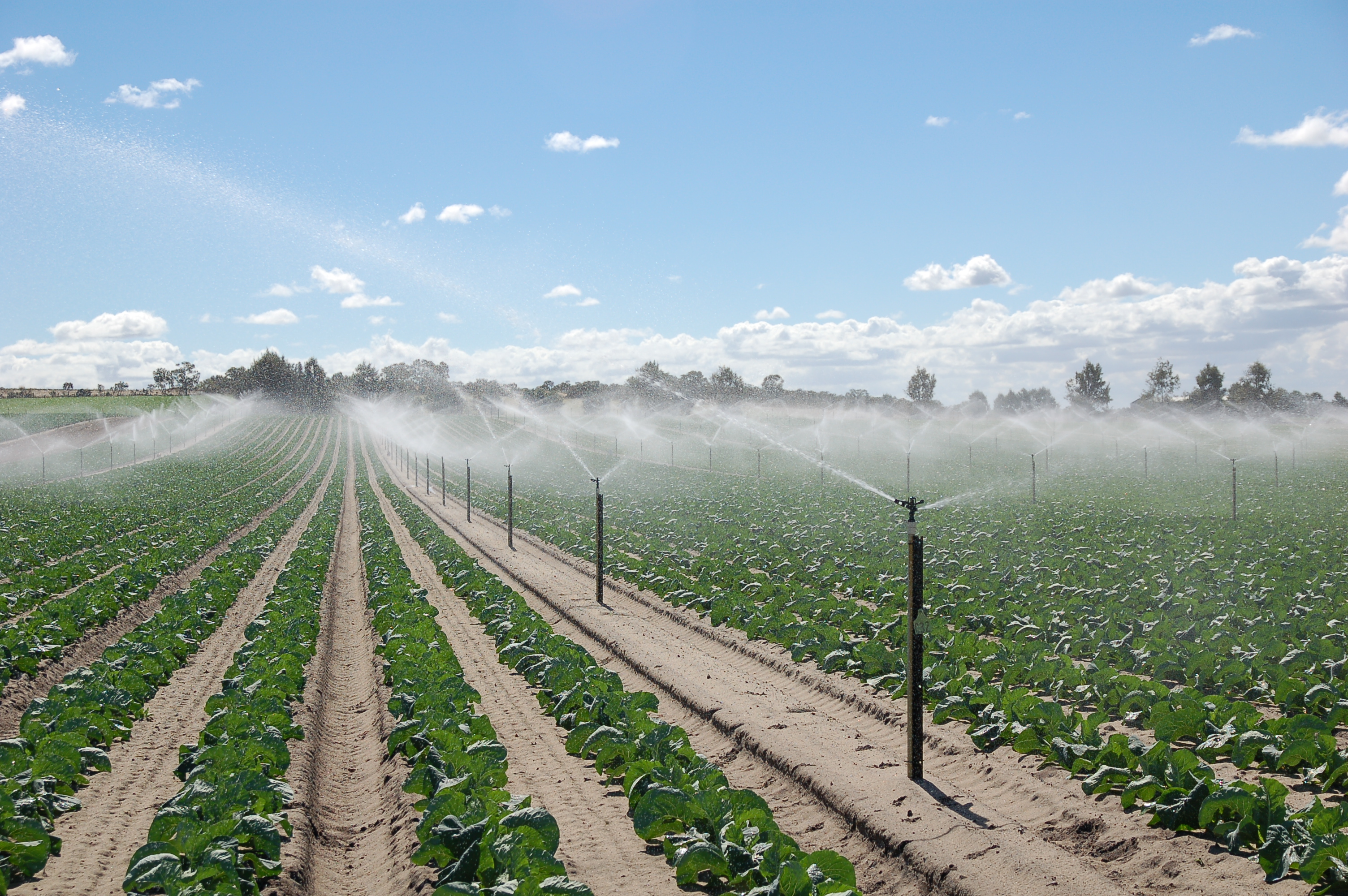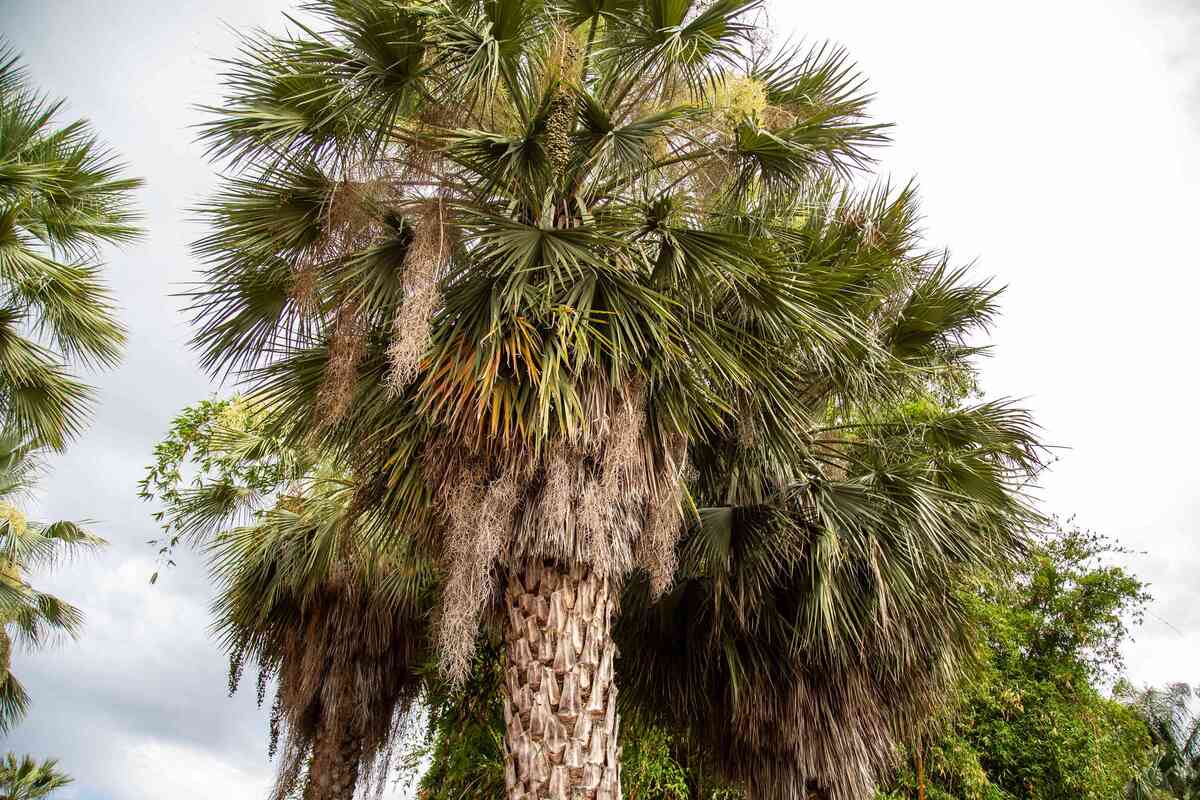Home>Gardening Basics>Understanding Soil>How Long Does Salt Stay In Soil


Understanding Soil
How Long Does Salt Stay In Soil
Modified: February 10, 2024
Discover the impact of salt on soil and how long it remains. Gain a better understanding of soil composition and the effects of salt infiltration.
(Many of the links in this article redirect to a specific reviewed product. Your purchase of these products through affiliate links helps to generate commission for Chicagolandgardening.com, at no extra cost. Learn more)
Table of Contents
Introduction
Welcome to the fascinating world of soils! Soils play a crucial role in supporting life on Earth, providing a medium for plant growth and acting as a reservoir for water and nutrients. However, not all soils are created equal, and one important aspect to consider is the presence of salt. Salt in soil can have significant implications for plant health and overall soil fertility.
Salts are naturally occurring compounds composed of positively charged ions (cations) and negatively charged ions (anions). These ions can come from various sources, including weathering of rocks, mineral deposits, fertilizers, and irrigation water. When salts are present in excessive amounts in the soil, they can disrupt plant physiology and affect the soil’s ability to hold water.
The persistence of salt in soil depends on several factors, including the type of salt, environmental conditions, and management practices. Some salts are more soluble and prone to leaching, while others can accumulate over time. Understanding these factors is essential for effective soil management and ensuring optimal plant growth.
In this article, we will explore the factors that affect the persistence of salt in soil, the different types of salts and their residual effects, the movement and leaching of salts in soil, the accumulation of salts, and the impact of salt on plants and soil health. We will also discuss remediation strategies and ways to decrease salt levels in the soil.
If you’re a gardener, farmer, or simply curious about the fascinating world beneath your feet, this article will provide you with valuable insights into the role of salt in soil and its impact on plant growth and soil health. So, let’s dive in and explore the intriguing and complex relationship between salt and soil!
Factors Affecting the Persistence of Salt in Soil
The persistence of salt in soil is influenced by various factors that interact with each other to determine its fate and impact. Understanding these factors is crucial for managing and mitigating the effects of salt on soil and plant health. Let’s take a closer look at some of the key factors:
1. Soil Characteristics: The properties of the soil, such as texture, organic matter content, and drainage, can influence the persistence of salt. Sandy soils tend to have lower water-holding capacity and can result in faster leaching of salts. On the other hand, clay soils with high cation exchange capacity can retain more salts, making them more prone to salt accumulation.
2. Climate and Precipitation: Climate plays a significant role in salt persistence. In arid and semi-arid regions with low rainfall, salts can accumulate due to evaporation, as water evaporates, leaving behind salt residues. In contrast, areas with high rainfall and adequate drainage have a greater potential for leaching salts below the root zone, reducing their persistence in the soil.
3. Irrigation Practices: The source and quality of irrigation water can significantly impact salt levels in the soil. Water containing high salt concentrations can increase the overall salt content in the soil over time. Proper irrigation management, including adequate leaching and using high-quality water, can help prevent salt buildup and enhance salt removal from the root zone.
4. Fertilizer Application: The type and amount of fertilizers used can contribute to the persistence of salt in soil. Some fertilizers, such as certain forms of nitrogen, potassium, and phosphorus, contain salts that can accumulate in the soil if applied excessively. This highlights the importance of balanced fertilizer applications and understanding the specific nutrient requirements of plants.
5. Land Management Practices: Soil management practices, such as crop rotation, cover cropping, and tillage, can influence salt levels in the soil. Certain crops have a higher salt tolerance and can remove salts from the soil through their root systems. Additionally, incorporating organic matter into the soil can improve soil structure and drainage, reducing the persistence of salts.
6. Salt Composition: Different types of salts have varying degrees of solubility, which affects their persistence in soil. For example, highly soluble salts like sodium chloride (common table salt) are more likely to leach through the soil profile, while less soluble salts like calcium sulfate (gypsum) can accumulate over time.
By understanding and managing these factors, it is possible to reduce the persistence of salt in soil and maintain a healthy environment for plant growth. Implementing effective irrigation practices, taking into account soil characteristics, and making informed fertilizer and land management decisions are key steps in minimizing the negative effects of salt on soil and plant health.
Types of Salt and Their Residual Effects
When we talk about salt in the context of soil, we are referring to various types of salts that can impact soil and plant health. Let’s explore some common salts and their residual effects:
1. Sodium chloride (NaCl): Sodium chloride, commonly known as table salt, is one of the most well-known salts. When present in excessive amounts in soil, it can cause soil salinity and negatively affect plant growth. Sodium ions displace other essential cations, such as calcium and magnesium, leading to soil structure degradation and reduced water infiltration capacity.
2. Calcium sulfate (CaSO4): Calcium sulfate, also known as gypsum, is a soluble salt that can accumulate in soils with poor drainage. Gypsum has a residual effect on soil by improving soil structure and reducing the harmful impact of sodium ions. It helps in flocculating clay particles, allowing for better water movement and root penetration.
3. Potassium chloride (KCl): Potassium chloride is a common source of potassium, an essential nutrient for plant growth. However, when used in excessive amounts, it can contribute to soil salinity. High levels of chloride ions present in potassium chloride can be toxic to sensitive crops and negatively affect soil structure.
4. Ammonium nitrate (NH4NO3): Ammonium nitrate is a widely used nitrogen fertilizer. When applied in large quantities, it can contribute to soil salinity. The ammonium ions present in ammonium nitrate can be transformed into nitrate ions, which are highly soluble and prone to leaching if not taken up by plant roots.
5. Phosphorus salts: Various salts containing phosphorus, such as diammonium phosphate (DAP) and triple superphosphate (TSP), are commonly used as fertilizers. These salts do not contribute significantly to soil salinity. However, excessive application of phosphorus fertilizers can lead to nutrient imbalances and negatively impact soil biology.
It is important to note that the residual effects of salts in soil can vary depending on the specific conditions and management practices. The rate and timing of salt application, as well as the soil’s ability to leach or accumulate salts, all play a role in determining the long-term impact on soil and plant health.
Understanding the types of salts present in the soil and their residual effects is crucial for making informed decisions about fertilizer application, irrigation practices, and soil amendments. By carefully managing the salts in our soils, we can promote optimal plant growth and maintain a healthy soil ecosystem.
Salt Movement and Leaching
The movement of salts in soil and their potential for leaching play a significant role in determining their persistence and impact. Understanding how salts move through the soil profile is essential for effective salt management. Let’s explore the key factors influencing salt movement and leaching:
1. Water Dynamics: Water is the primary vehicle for salt movement in soil. When water containing dissolved salts infiltrates the soil, it carries the salts downward. The movement of water can be influenced by factors such as soil texture, organic matter content, and compaction. Sandy soils, for example, have larger pores and allow for faster water movement, potentially leading to more rapid salt leaching.
2. Leaching: Leaching refers to the process by which salts are carried downwards through the soil profile and out of the root zone. The extent of leaching depends on factors such as precipitation, irrigation practices, and soil permeability. Adequate rainfall or irrigation, coupled with well-drained soils, promotes leaching and helps prevent salt buildup in the root zone.
3. Soil Salinity: Soil salinity, or the concentration of salts in the soil, affects the movement and leaching of salts. In regions with naturally high salt concentrations, the leaching capacity of the soil may be reduced, leading to salt accumulation. Additionally, high soil salinity can decrease water availability to plants, further affecting their growth and productivity.
4. Root Uptake: Plants play a role in the movement and leaching of salts through their root systems. As plants extract water from the soil, they take up salts along with it. This process helps reduce salt levels in the soil, especially in the root zone. However, not all plants have the same capacity to tolerate and uptake salts. Some salt-tolerant crops, known as halophytes, can thrive in saline soils and contribute to salt removal through their root systems.
5. Capillary Rise: Capillary rise is the phenomenon by which water containing dissolved salts moves upward through the soil. This movement is driven by capillary forces and can lead to salt accumulation near the soil surface. In areas with shallow water tables or high evaporation rates, capillary rise can contribute to the upward movement and concentration of salts.
6. Drainage and Irrigation Management: Proper drainage and irrigation practices are crucial for controlling salt movement and leaching. Improving soil drainage through techniques such as installing drainage systems or adding organic matter can help prevent waterlogged conditions and facilitate leaching. Additionally, implementing irrigation strategies that promote deep percolation and leaching can aid in salt removal from the root zone.
By understanding the dynamics of salt movement and implementing appropriate management strategies, it is possible to reduce salt accumulation in the root zone, prevent soil salinity, and promote healthy plant growth. Balancing irrigation practices, maintaining adequate drainage, and choosing appropriate crops or salt-tolerant varieties are all important considerations in effective salt management.
Salt Accumulation in Soil
Salt accumulation in soil is a common problem in areas with high salt content in water or soils, or when improper irrigation and management practices are followed. When salts accumulate in the soil, they can have detrimental effects on plant growth and soil health. Let’s explore the factors contributing to salt accumulation and its consequences:
1. Evaporation and Transpiration: When water evaporates from the soil surface or transpires through plant leaves, salts dissolved in the water are left behind, leading to salt accumulation. This can be a significant issue in arid and semi-arid regions with high evaporation rates and limited rainfall.
2. Insufficient Leaching: Insufficient leaching is another factor contributing to salt accumulation. If irrigation or rainfall is not enough to percolate through the soil profile, it doesn’t effectively carry salts below the root zone. Instead, the water evaporates, leaving the salts behind in the upper layers of soil.
3. Soil Salinity: Soils with naturally high salt content can be prone to salt accumulation. In these areas, the leaching capacity of soils may be limited, making it challenging to eliminate excess salts.
4. Irrigation Water Quality: The quality of irrigation water plays a crucial role in salt accumulation. If the water used for irrigation has high salt content, continuous use over time can lead to salt buildup in the soil. It’s important to monitor the quality of irrigation water and consider using water with lower salt concentrations or implementing proper water treatment methods.
5. Improper Fertilizer Application: Excessive or imbalanced fertilizer applications can also contribute to salt accumulation. Fertilizers containing salts, if overused, can increase the overall salt content in the soil. It’s important to follow recommended fertilizer application rates and consider soil testing to determine the specific nutrient requirements of plants.
6. Poor Drainage: Inadequate soil drainage can hinder the movement of water and salt leaching, leading to salt accumulation. Compacted soils, high clay content, or a shallow water table can all contribute to poor drainage and salt buildup in the root zone.
The consequences of salt accumulation in soil can be detrimental to plant growth and soil health. High salt levels can negatively impact plant roots by reducing water and nutrient uptake, affecting the overall vigor and productivity of plants. Salt-affected soils may become compacted, reducing soil aeration and nutrient availability.
To mitigate salt accumulation, proper management practices should be adopted. This includes implementing leaching strategies through adequate irrigation, using high-quality water with lower salt content, practicing crop rotation to include salt-tolerant plants, improving soil drainage, and considering the use of amendments like gypsum to combat salt accumulation.
By addressing the factors contributing to salt accumulation and implementing appropriate management techniques, it is possible to maintain healthier soils and support robust plant growth.
Salt’s Impact on Plants and Soil Health
The presence of high salt levels in soil can have significant impacts on both plant growth and overall soil health. Understanding the effects of salt on plants and soil is essential for effective management and mitigation strategies. Let’s delve into the consequences of salt on plants and soil health:
1. Reduced Water Uptake: Excessive salt in the soil can create an osmotic imbalance, making it difficult for plants to extract water from the soil through their roots. The high concentration of salts in the soil solution can actually draw water out of plant roots, leading to dehydration and reduced water uptake. This can result in stunted growth, wilting, and even plant death.
2. Ion Imbalance: High levels of salt can disrupt the balance of essential ions in plant tissues. Sodium ions, for instance, can compete with other important cations like calcium, magnesium, and potassium, leading to nutrient imbalances. This imbalance can interfere with various physiological processes and inhibit plant growth and development.
3. Decreased Nutrient Availability: Salt-affected soils can have reduced nutrient availability. High salt levels can impair the soil’s ability to retain and release nutrients, negatively impacting plant nutrient uptake. The increased levels of certain ions, such as sodium, can also hinder the absorption of other essential nutrients by plant roots.
4. Soil Structure Degradation: Salt accumulation in the soil can contribute to soil structure degradation. Sodium ions can displace calcium and magnesium ions, leading to the breakdown of soil aggregates, reduced soil porosity, and increased soil compaction. This, in turn, affects water infiltration, nutrient movement, and root growth.
5. Soil Microbial Activity: Excessive salt levels can adversely affect soil microbial activity. Many beneficial microorganisms, such as bacteria and fungi, are sensitive to high salt concentrations. Reduced microbial activity can impact nutrient cycling, organic matter decomposition, and overall soil fertility.
6. Decreased Crop Yield and Quality: The combined effects of salt on plant water uptake, nutrient availability, and soil health can lead to decreased crop yield and quality. Plants grown in salt-affected soils often exhibit reduced vigor, smaller fruits or grains, and poorer overall quality.
To mitigate the impact of salt on plants and soil health, several strategies can be employed. These include implementing proper irrigation techniques to promote leaching, selecting salt-tolerant plant varieties, improving soil drainage, and adopting soil amendment practices such as adding organic matter or applying gypsum to improve soil structure and reduce sodium impacts.
By understanding the detrimental effects of salt on plants and soil health, proactive measures can be taken to maintain a favorable growing environment, support healthy plant growth, and preserve soil fertility.
Remediation and Decreasing Salt Levels
When salt levels in soil become problematic, it is important to implement remediation strategies to reduce the salt content and restore a healthy growing environment. Several approaches can be taken to decrease salt levels and mitigate the negative effects. Let’s explore some common remediation methods:
1. Proper Irrigation Management: Effective irrigation management is crucial in minimizing salt accumulation and promoting leaching. Implementing practices such as deep watering, using irrigation systems with good distribution uniformity, and monitoring soil moisture levels can help prevent the buildup of salts near the root zone.
2. Leaching: Leaching is an important process to remove excess salts from the soil. It involves providing more water than the crop’s water requirement to flush out the accumulated salts. This can be achieved through controlled flooding, where a large volume of water is applied to the soil and allowed to drain away. The process should be repeated as necessary to leach out the salts effectively.
3. Soil Amendments: Adding soil amendments can be beneficial in reducing salt levels and improving soil conditions. Gypsum (calcium sulfate) is commonly used to improve soil structure and enhance the leaching of salts. It can help displace sodium ions and improve water infiltration, thus aiding in the removal of excess salts from the soil.
4. Adequate Drainage: Proper soil drainage is essential to prevent salt accumulation. Improving soil permeability through practices such as installing drainage systems, incorporating organic matter, or creating raised beds can enhance water movement and prevent waterlogging, minimizing the potential for salt buildup.
5. Selecting Salt-Tolerant Plants: Choosing plant varieties that have a higher tolerance to salt can help mitigate the negative effects of salinity. These plants are better equipped to withstand salt stress and can continue to grow and produce under less favorable soil conditions. Salt-tolerant plants can help extract salts from the soil through their root systems and contribute to reducing salt levels over time.
6. Managing Fertilizer Application: Proper management of fertilizer application is essential in preventing salt accumulation. This includes selecting appropriate fertilizers, following recommended application rates, and adjusting nutrient inputs based on soil testing. By ensuring a balanced nutrient supply, it reduces the risk of nutrient imbalances and subsequent salt-related issues.
To determine the most effective remediation methods, it is important to consider the specific salt content and soil conditions in a particular area. Soil testing and consultation with agricultural experts or soil scientists can provide valuable guidance in developing a comprehensive remediation plan.
Implementing these remediation strategies can help decrease salt levels in the soil, create a more favorable environment for plant growth, and restore the overall health of the soil. Regular monitoring and continued efforts are essential in managing and preventing salt-related issues in the long run.
Conclusion
The presence of salt in soil can have profound impacts on plant growth and overall soil health. Understanding the factors affecting salt persistence, the types of salts and their residual effects, salt movement and leaching, salt accumulation, and the impact on plants and soil health is essential for effective soil management.
Factors such as soil characteristics, climate, irrigation practices, fertilizer application, and land management influence the persistence of salt in soil. By considering these factors, we can implement appropriate strategies to minimize salt accumulation and maintain a healthy soil environment for plants to thrive.
The type of salt present in the soil and its residual effects play a significant role in determining its impact on plant growth. Sodium chloride, calcium sulfate, potassium chloride, ammonium nitrate, and phosphorus salts all have specific effects on both plants and soil fertility. Proper understanding of these salts allows for informed decision-making in terms of fertilizer application and nutrient management.
Salt movement and leaching control the potential for salt accumulation in the soil. By ensuring proper water dynamics, leaching, and adequate drainage, we can prevent salt buildup in the root zone and promote the removal of excess salts from the soil profile. This is crucial in maintaining a balanced soil ecosystem that supports plant growth and nutrient availability.
Salt accumulation in soil leads to detrimental effects on plant growth and overall soil health. It reduces water uptake, disrupts ion balance, decreases nutrient availability, degrades soil structure, and impacts soil microbial activity. These consequences affect crop yield, plant quality, and soil fertility.
Fortunately, there are ways to remediate and decrease salt levels in the soil. Proper irrigation management, leaching, soil amendments, adequate drainage, and selecting salt-tolerant plants are effective strategies to reduce salt accumulation and improve soil conditions. Integrated approaches that take into account specific soil conditions and salt content yield the best results.
In conclusion, understanding soil salt dynamics and implementing appropriate management strategies are crucial for maintaining healthy soil and promoting optimal plant growth. By carefully managing salt levels, we can create a more favorable environment for plants and ensure the long-term sustainability of our agricultural systems.






